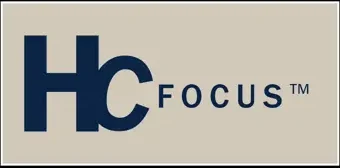For medical device, test, and technology innovators, one of the earliest and most important questions is: When do we need an advisory board?
The answer is nuanced. Advisory boards, also called ad boards, can provide critical insight into how physicians and other end users will adopt a new product. But if the timing isn’t right, an advisory board could actually set you back.
What Is an Advisory Board?
In this context, an advisory board is a structured group of stakeholders — often physicians, sometimes scientists, or laboratory administrators — who provide input on whether and how a new technology might be used.
Feedback from the medical community is obviously critical. Simply put, reimbursement doesn’t matter if physicians won’t use the product. Physician adoption drives utilization, and without utilization, there’s no pathway to payment — and no pathway to patients.
At What Point Do You Need Physician Input?
The short answer: as early as possible.
Feedback during development can influence everything from design choices to usability in real-world clinical settings. For example:
- Will a physician realistically use this point-of-care test in their office?
- How does our device fit into the patient care pathway?
- Will a primary care physician feel comfortable managing a patient based on an AI algorithm or specialist only?
These questions not only shape the product itself, but also investor conversations. Early feedback helps demonstrate that your innovation addresses a genuine, unmet clinical need, and that physicians consider it practical to use. That’s a cornerstone of any investor deck.
The Limits of Traditional Advisory Boards
For most early-stage companies, structured feedback is vital—but there are important factors to consider when bringing together an ad board.
First, the expense. Medical ad boards in biotech are typically formed as ongoing strategic resources, and are compensated with per-meeting fees, annual retainers and/or equity. There is usually an understanding that these will be ongoing and as such will carry ongoing costs.
Second, by definition, classic advisory boards typically bring a group of experts together for presentations and discussion which means that while valuable, they can be vulnerable to group dynamics and bias:
- Hierarchy and hesitation: Physicians in community practice may hesitate to challenge academic leaders.
- Dominant voices: The loudest participant can overshadow critical insights from quieter experts.
- Company presence: Innovators often sit in on these sessions, but that can unintentionally bias the feedback.
The danger is that the ad board structure could result in companies hearing what they want to hear, rather than what they need to hear.
Third, making changes to an advisory board later on can have unintended consequences. Downsizing or replacing a member risks alienating a valuable voice, or worse, a potential champion of your technology.
The HcFocus Approach
At HcFocus, while we don’t discourage companies from empaneling ad boards, we have developed our own effective alternative to ad boards: Physician Insights Projects.
Instead of group boards, we conduct structured one-on-one interviews with carefully selected physicians. Our process includes:
- Rigorous vetting by physician colleagues to ensure that selected physicians are both knowledgeable in their specialty area and genuinely interested in innovation.
- Independent interviews conducted without company presence, to minimize bias.
- Comprehensive analysis that distills findings into clear, actionable themes.
We typically begin with a small select group of physicians. Our experience shows that if these clinicians who would most likely be utilizing your test or device can’t agree that your product adds value, that signals a fundamental challenge. Conversely, if there is agreement, you are highly likely to be on the right track for going to market. From there, insights can be expanded to include lab directors, payers, or other stakeholders as needed.
Another major benefit of this approach is that our HcFocus reimbursement specialists can quickly distill the ‘ideal patient’ to present to payors when advocating on our behalf. For companies who will need to present to the FDA, the ‘indication for use’ likewise comes into sharper view.
The outcome is a qualitative, data-driven understanding of how your innovation fits into the clinical, reimbursement, and regulatory landscape — without the long-term costs of maintaining an ad board.
Bottom Line
Every medical technology company needs reliable feedback from its end users. For some, a formal advisory board is the right tool. For others, especially early-stage innovators, structured physician insight is essential, and often more valuable than a traditional ad board.
At HcFocus, our strength lies in combining medical affairs expertise with deep physician networks to deliver unbiased, actionable insights. Because at the end of the day, the most important question isn’t just Can we get this product approved? It’s Will physicians use it?
